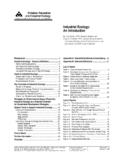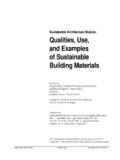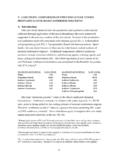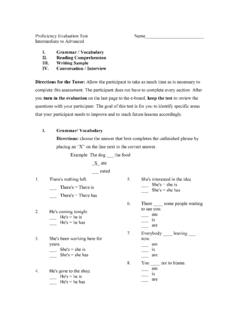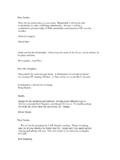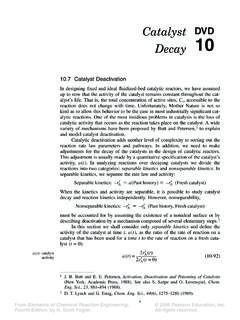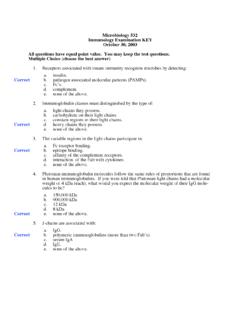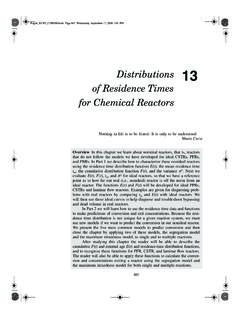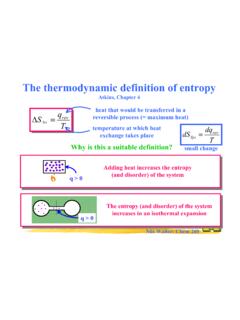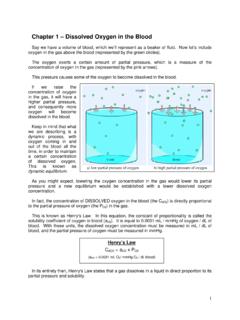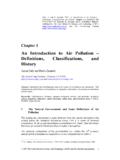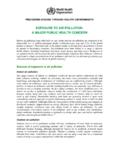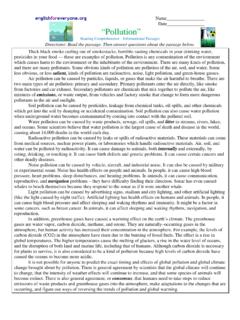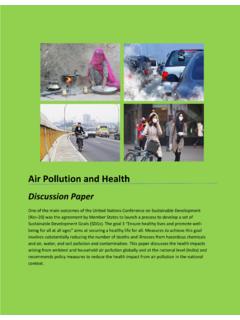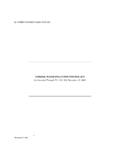Transcription of Pollution Prevention Concepts and Principles
1 P2 Concepts and Principles 1 September 1995 NATIONAL Pollution Prevention CENTER FOR HIGHER EDUCATIONI ntroductory PollutionPrevention MaterialsPollution PreventionConcepts and PrinciplesBy Erica Phipps, NPPC Research Assistant. This document introduces theconcepts and Principles of Pollution Prevention (P2) and gives a brief overview ofP2 activities of government, industry, and the general public. University facultyand other educators should find this document useful in preparing lectures on P2,or in incorporating P2 Concepts into their specific disciplines.
2 In addition, thisdocument may serve as useful introductory reading for Prevention : An Emerging Pollution The Pollution Prevention Act of Related Concepts and Prevention and Sustainable EPA s Approach to Pollution Regulatory, Programmatic, and Funding Initiatives:Source Reduction Review Project, Common SenseInitiative, Toxic Release Inventory (TRI)..6 Federal Other Voluntary Programs: 33/50, DfE, Green Lights, EnergyStar Buildings, Energy Star Computers, Natural Gas Star,Golden Carrot, WasteWi$e, ClimateWise, Prevention at the State Prevention in Potential Benefits: Cost Savings, Reduced Legal Liability,Improved Corporate Image, Improved Worker Corporate Programs: Dow, 3M, Barriers: Corporate Culture & Institutional Norms;Cost; Prescriptive, Technology-Specific Regs or Mindsets.
3 Difficulties in Identifying Lack of Measurement Tools and Lack of Long-term Planning & Consumer Prevention and the and Additional Pollution Prevention Center for Higher Education University of MichiganMay be reproducedDana Building, 430 East University, Ann Arbor MI 48109-1115freely for fax ~nppcpubeducational P2 Concepts and PrinciplesSeptember 1995 Pollution Prevention :An Emerging ApproachDuring the first few decades of environmental protec-tion regulation in the United States, the focus was oncontaining or cleaning up Pollution after it was gener-ated.
4 Since the 1960s and 1970s, these strategies haveresulted in significant improvement in many aspects ofenvironmental quality. However, regulations that focuson the end of the pipe or the top of the stack do little toprevent Pollution or avert future impacts often, theyjust cause the Pollution to be shifted from one environ-mental medium (air, water, or land) to another. The command-and-control nature of the regulatory sys-tem (in which government sets prescriptive standardsand in some cases dictates methods for compliance)also has contributed to this emphasis on after-the-factpollution with the limitations inherent in such pollutionmanagement strategies as containment and remediation,many sectors of government and industry are shiftingtoward a more preventive, proactive approach.
5 Thisemerging approach, referred to as Pollution Prevention ,offers a promising means for protecting the environ-ment and achieving more efficient use of Prevention is not something that can be simplyadded on to existing practices and systems. It involvesidentifying the root causes of waste and figuring outways to minimize its creation, often by using energyand materials more efficiently. Pollution and can resultfrom virtually all human activities. Therefore, pollutionprevention represents a challenge that is open to allmembers of society, at all levels of activity and decision-making.
6 The role of education is crucial: pollutionprevention requires having the skills, creativity, andmindset to holistically identify options for improve-ment and Pollution PreventionPollution Prevention (P2) is the reduction or eliminationof wastes and pollutants at their sources. For all thepollution that is avoided in the first place, there is thatmuch less Pollution to manage, treat, dispose of, orclean up. P2 can encompass activities such as: redesigning products to cause less waste orpollution during manufacture, use, or disposal altering production processes to minimizethe use of toxic chemicals implementing better housekeeping practicesto minimize leaks and fugitive releases frommanufacturing processes taking steps to reduce energy consumptionPollution Prevention within industry generally receivesthe most attention.
7 However, P2 efforts in other sectorsare equally important. For example, planting pest-resistant crops can reduce or eliminate the need forchemical pesticides, thereby reducing the water, air,and soil Pollution that results from the manufactureand use of agricultural chemicals. In office settings,simple steps such as making double-sided copies andprinting drafts on the back sides of discarded papercan substantially reduce the consumption and disposalof paper products. In the home, minimizing the use oftoxic household chemicals such as drain cleaners andherbicides will reduce the amount of hazardouschemicals that eventually end up in the range of P2 opportunities is constrained only bythe limits to our imagination and ingenuity, and thestrength of our commitment to improving our relation-ship with the Pollution Prevention Act of 1990 Following passage of the Pollution Prevention Act of 1990, the Environmental Protection Agencydeveloped a formal definition of P2 and a strategy formaking it a central guiding mission.
8 Under Section6602(b) of the Pollution Prevention Act, Congressestablished a national policy that: Pollution should be prevented or reduced at the sourcewhenever feasible; Pollution that cannot be prevented should be recycledin an environmentally safe manner whenever feasible; Pollution that cannot be prevented or recycledshould be treated in an environmentally safe mannerwhenever feasible; and disposal or other release into the environment shouldbe employed only as a last resort and should be con-ducted in an environmentally safe hierarchy of preferred options for dealing withenvironmental Pollution officially places Prevention atthe top of the list.
9 P2 Concepts and Principles 3 September 1995 The exclusion of out-of-process recycling from theofficial definition of P2 activities has been a source ofcontroversy. Strictly speaking, recycling is not a formof Prevention . However, recycling can confer sub-stantial environmental improvements and can aid inconserving valuable resources. Thus, industry hasargued that recycling should be on par with pollutionprevention, because it represents progress towardreducing environmental Pollution and achievinggreater efficiency in resource EPA has held fast to the narrower interpretationof P2, which excludes recycling because even wastesthat are effectively recycled have not been being indicative of an inefficient use ofmaterials, wastes once they have been generated have the potential to harm workers, the environment,and public health.
10 However, the position of recyclingas the second highest option in Congress s and theEPA s P2/waste management hierarchy (see box)attests to its desirability as a goal in cases where wastecannot feasibly be prevented.* Furthermore, in somecases in-process recycling in which materials aredirectly reincorporated into the same process isconsidered a form of Concepts and TerminologyPollution Prevention is a newly developing field, thusthere is a lot of terminology being used by differentgroups and individuals, not all of which is yet welldefined or consistently used.
